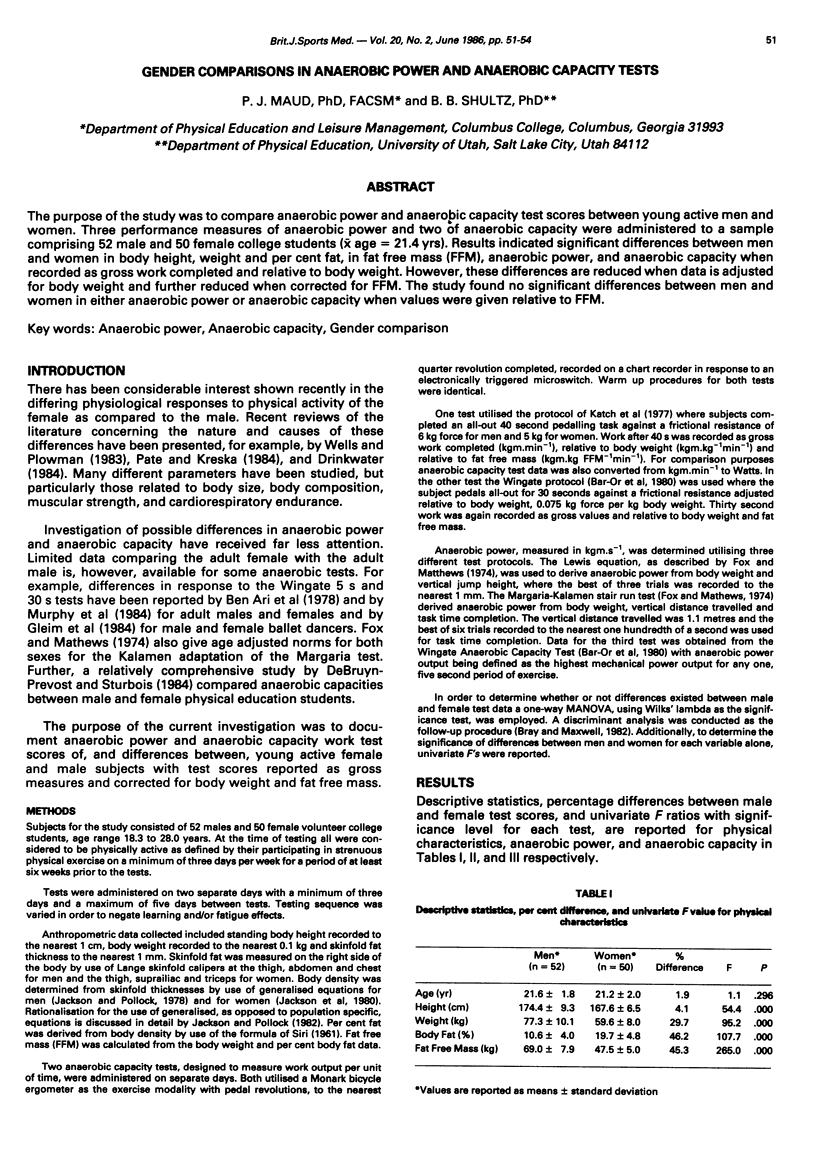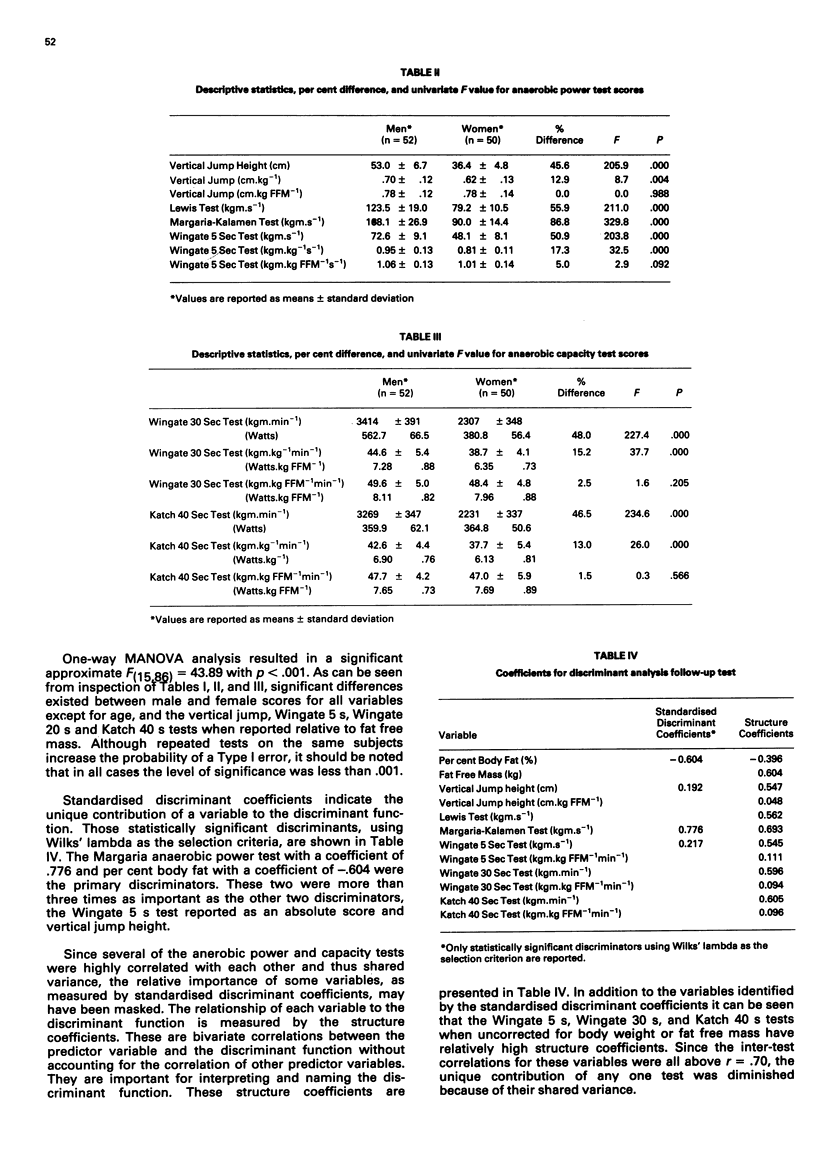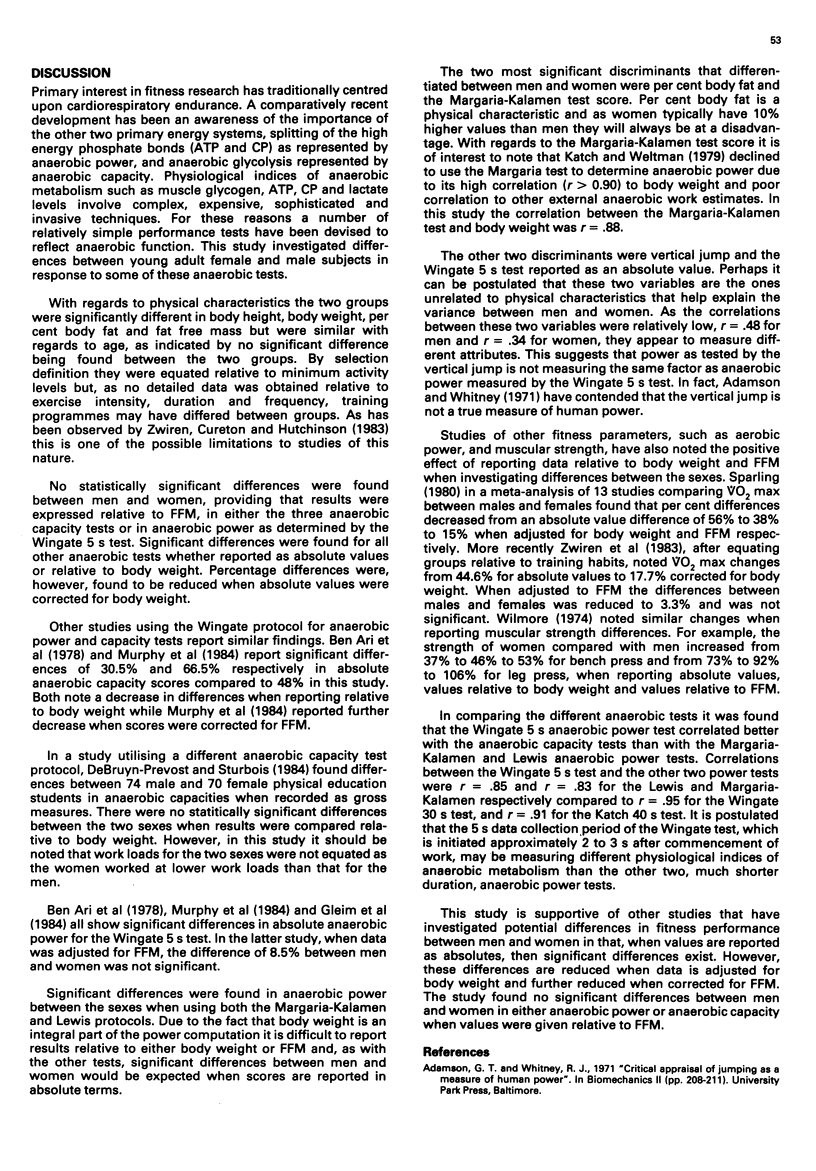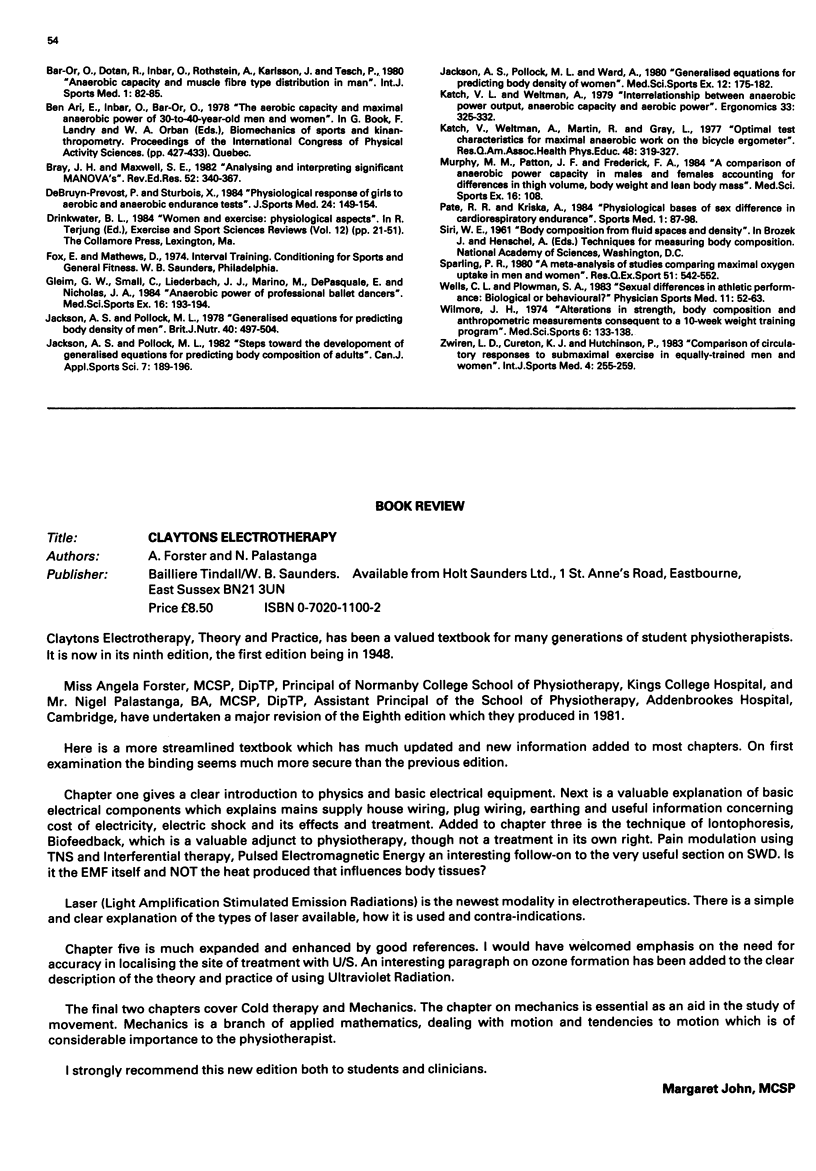Abstract
The purpose of the study was to compare anaerobic power and anaerobic capacity test scores between young active men and women. Three performance measures of anaerobic power and two of anaerobic capacity were administered to a sample comprising 52 male and 50 female college students (means age = 21.4 yrs). Results indicated significant differences between men and women in body height, weight and per cent fat, in fat free mass (FFM), anaerobic power, and anaerobic capacity when recorded as gross work completed and relative to body weight. However, these differences are reduced when data is adjusted for body weight and further reduced when corrected for FFM. The study found no significant differences between men and women in either anaerobic power or anaerobic capacity when values were given relative to FFM.
Full text
PDF



Selected References
These references are in PubMed. This may not be the complete list of references from this article.
- De Bruyn-Prevost P., Sturbois X. Physiological response of girls to aerobic and anaerobic endurance tests. J Sports Med Phys Fitness. 1984 Jun;24(2):149–154. [PubMed] [Google Scholar]
- Drinkwater B. L. Women and exercise: physiological aspects. Exerc Sport Sci Rev. 1984;12:21–51. [PubMed] [Google Scholar]
- Jackson A. S., Pollock M. L. Generalized equations for predicting body density of men. Br J Nutr. 1978 Nov;40(3):497–504. doi: 10.1079/bjn19780152. [DOI] [PubMed] [Google Scholar]
- Jackson A. S., Pollock M. L. Steps toward the development of generalized equations for predicting body composition of adults. Can J Appl Sport Sci. 1982 Sep;7(3):189–196. [PubMed] [Google Scholar]
- Jackson A. S., Pollock M. L., Ward A. Generalized equations for predicting body density of women. Med Sci Sports Exerc. 1980;12(3):175–181. [PubMed] [Google Scholar]
- Katch V. L., Weltman A. Interrelationship between anaerobic power output, anaerobic capacity and aerobic power. Ergonomics. 1979 Mar;22(3):325–332. doi: 10.1080/00140137908924616. [DOI] [PubMed] [Google Scholar]
- Katch V., Weltman A., Martin R., Gray L. Optimal test characteristics for maximal anaerobic work on the bicycle ergometer. Res Q. 1977 May;48(2):319–327. [PubMed] [Google Scholar]
- Pate R. R., Kriska A. Physiological basis of the sex difference in cardiorespiratory endurance. Sports Med. 1984 Mar-Apr;1(2):87–98. doi: 10.2165/00007256-198401020-00001. [DOI] [PubMed] [Google Scholar]
- Sparling P. B. A meta-analysis of studies comparing maximal oxygen uptake in men and women. Res Q Exerc Sport. 1980 Oct;51(3):542–552. doi: 10.1080/02701367.1980.10608077. [DOI] [PubMed] [Google Scholar]
- Wilmore J. H. Alterations in strength, body composition and anthropometric measurements consequent to a 10-week weight training program. Med Sci Sports. 1974 Summer;6(2):133–138. [PubMed] [Google Scholar]
- Zwiren L. D., Cureton K. J., Hutchinson P. Comparison of circulatory responses to submaximal exercise in equally trained men and women. Int J Sports Med. 1983 Nov;4(4):255–259. doi: 10.1055/s-2008-1026045. [DOI] [PubMed] [Google Scholar]


